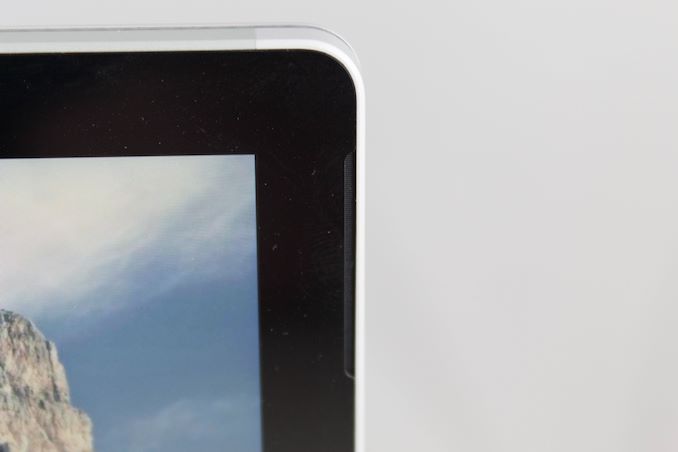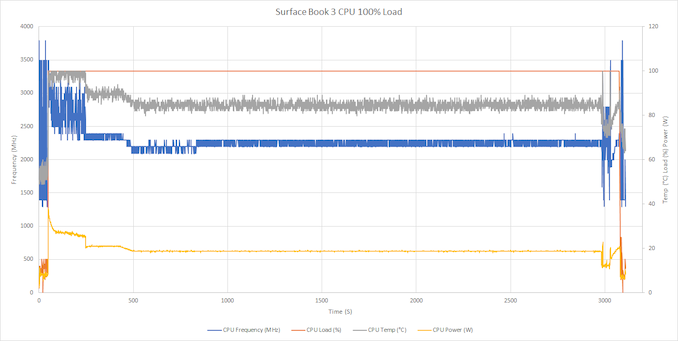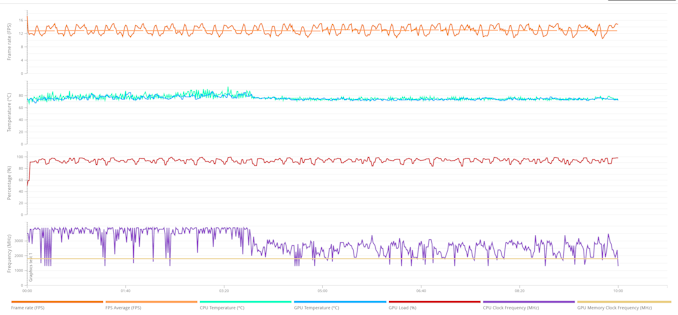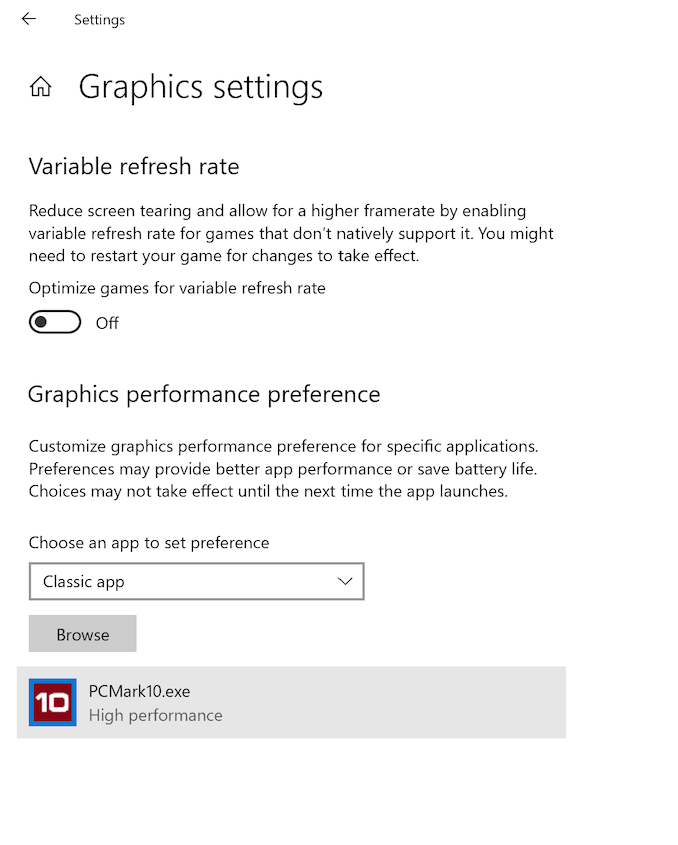The Microsoft Surface Book 3 (15-Inch) Review: A Refreshing Dip Into Ice Lake
by Brett Howse on June 3, 2020 9:00 AM ESTWireless
For the past several generations, Microsoft has leveraged Marvell networking adapters, unless the device had LTE, in which case they tended to use Qualcomm. Unfortunately, both were prone to unreliability and could not keep up with sustained transfer speeds like the latest Intel wireless solutions. Now that Wi-Fi 6 is upon us, the trend seems to be for everyone to use Intel wireless, including the Surface lineup. The Surface Book 3 features the Intel AX201 Wi-Fi 6 network adapter, which is a 2x2:2 design with the full 160 MHz channel width support.

The speeds are fantastic, and Intel has continued offering their very solid drivers too, so reliability has been top-notch. Although competition is always welcome, in the PC space there is really one standout wireless solution, and this is it.
Audio
Microsoft outfits the Surface Book 3 with front-facing stereo speakers featuring Dolby Atmos. As is typical of the Surface speakers, they blend almost seamlessly into the display bezel meaning they are almost invisible to the eye. There are also dual far-field microphones for dictation, or conferencing.
Sound quality of the speakers is excellent, and although they only achieved around 73dB(A) of SPL, the range of the speakers were quite impressive.
Thermals
The two-zone thermals of the Surface Book 3 mean that the temperature of the CPU will not impact the GPU, and vice versa. It also means that Microsoft has more room for a larger GPU, which we’ve seen the results of in our GPU testing. The CPU side with the Core i7-1065G7 has a thermal design of 15 Watts, meaning the processor is designed for a stead-state thermal load of 15 Watts, but with Intel’s aggressive Turbo, processors will draw much more than that for short bursts. On the GPU side, NVIDIA rates the GTX 1660 Ti Max-Q at between 65 and 80 Watts, depending on implementation.
The Surface Book 3 was subjected to a full CPU stress test, while monitoring the frequency and power draw of the processor. Interestingly, the processor very quickly bumps into the 100°C thermal limit, causing the processor to throttle at the start of the test during the PL1 stage of the CPU, which peaks at about 38 Watts maximum and 100°C. When PL1 ends and the processor moves into PL2, the power draw drops to a steady state value of around 19 Watts. So the Surface Book 3 can easily handle the full TDP of the processor, but it does not quite have enough to handle the full limit Microsoft implemented for PL1. This likely means there is not enough heatsink mass to handle the initial burst, although there is enough dissipation to handle the processor under load. As a comparison point, the Surface Laptop 3 with the same processor managed about 43 Watts at PL1 and it never quite reached the 100°C thermal cut-off, and then had a steady state of over 20 Watts. The overall cooling system is unsurprisingly not quite as capable as a more traditional laptop design, at least for the processor.
On the GPU front the Surface Book 3 also performs quite well. Unfortunately, our normal data logging tool was unable to read the GTX 1660 Ti, so instead we ran 20 loops of the 3DMark Fire Strike stress test. The GPU temperatures peaked at around 85° and settled in around 75°, with consistent FPS throughout the 20 loops.
One of the most amazing things about the Surface Book 3 thermals is how much performance there is considering the noise level. At full load after over an hour of use, the Surface Book 3 registered at only 43 dB(A) measured one inch over the trackpad. The tone of the noise is also low enough that it is very easy to live with. Despite not being able to get peak performance out of the CPU for a short window, the cooling system still does a great job and without much noise at all.
Software
One of the best perks of the Surface lineup is that there is no extra software installed to deal with, unless you include the unfortunate fluff that has started shipping directly in Windows. But as Surface is Microsoft’s device lineup, the Surface team also tends to bring new tech to Windows. For the Surface Laptop 3, that is the ability to choose the graphics adapter for each program directly in the Windows Settings. Previously, the NVIDIA Control Panel was required.
Branding of classic applications and UWP applications aside, it is nice to see this brought into Settings since it would be available for all GPU vendors and not require a proprietary tool.
Microsoft also includes the Surface App where you can see details about your device, battery levels of connected Surface peripherals, and get support.
Most laptops ship with some sort of tool for this function now, but the Surface one definitely has more polish than most.















125 Comments
View All Comments
jeremyshaw - Wednesday, June 3, 2020 - link
Does Marvell even make wifi chips anymore? I thought they sold off that product line, and good riddance, too. Those were always garbage. I'd take a single channel Realtek 802.11n solution over any Marvell Armada,.Whiteknight2020 - Wednesday, June 3, 2020 - link
Oddly, most people don't have to work in those sorts of temps.vol.2 - Wednesday, June 3, 2020 - link
Is this still using the PLS display technology?grant3 - Wednesday, June 3, 2020 - link
Premium device, premium price, and no Thunderbolt.Why? because a Micrososft executive was scared about thunderbolt being a vector for malware. Even though -Microsoft itself- has long ago patched that vulnerability in windows.
Astoundingly schizophrenic product line. Even Apple is was capable of loading up their laptops with TB ports years ago.
Deicidium369 - Thursday, June 4, 2020 - link
I don't think TB - outside of Apple - has much penetration in the market. There are some nice disk arrays that connect thru TB - those are platform agnostic... Think about FireWire - industry standard - pretty much Apple only.Retycint - Thursday, June 4, 2020 - link
Lots of people use TB docks at their workplace. It's most definitely not nichelmcd - Thursday, June 4, 2020 - link
Mostly because Dell standardized on TB3 as a way to deliver multiple monitor output over one connector.Deicidium369 - Friday, June 5, 2020 - link
not necessarily niche on the PC side - I confess other than the Dell 13 2-in-1s i don't own anything that is TB - looked into the docking stations - wouldn't really serve a useful purpose for me. I have been out of corp IT for quite a while now.vol.2 - Thursday, June 4, 2020 - link
that was my understanding as well. why bother?grant3 - Saturday, June 6, 2020 - link
"I don't think TB - outside of Apple - has much penetration in the market."That point is arguable, but regardless, thunderbolt has only upside and now downside from a usability perspective.
Now that TB has been royalty-free for a few years, there's no excuse not to include it on basically every laptop.
I hate on Apple as much as anyone, but at least we can give them credit for pushing USB forward and now pushing TB3 forward, to the benefit of everyone.